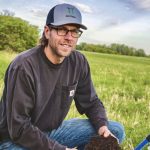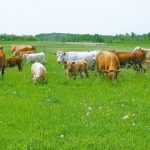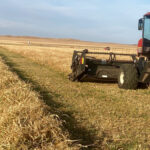Tag Archives grazing

Test plot measures effects of grazing in crop rotation
Groot family’s Wholesome Pastures is part of Living Labs study

Pasture knowledge refined to reflect Ontario’s climate
University of Guelph, OMAFRA research uses rising plate meters to accurately measure pasture yield

Could rotational grazing go virtual?
Wireless fencing technology that keeps dogs near home could also work for cattle

Nuffield scholar explores high-stocking-rate rotational grazing
Manitoba farmer touts benefits in soil-building and land preservation

Long-term study shows benefits of planned rotational grazing
Planned grazing can reduce feed costs and eliminate need for fertilizer

Feed weekly outlook: Heat reducing potential yields, raising prices

Saskatchewan raises salvage threshold for parched crops
Stock watering program also boosted; APAS, Tories' ag critic had called for more drought aid

Grass management is important for successful pastures
Timing of livestock introduction play important role in limiting overgrazing

Manitoba forage, grassland growers burned by drought

Let nature direct ecosystem health
Researcher says agriculture needs to learn from how water, soil function in nature
